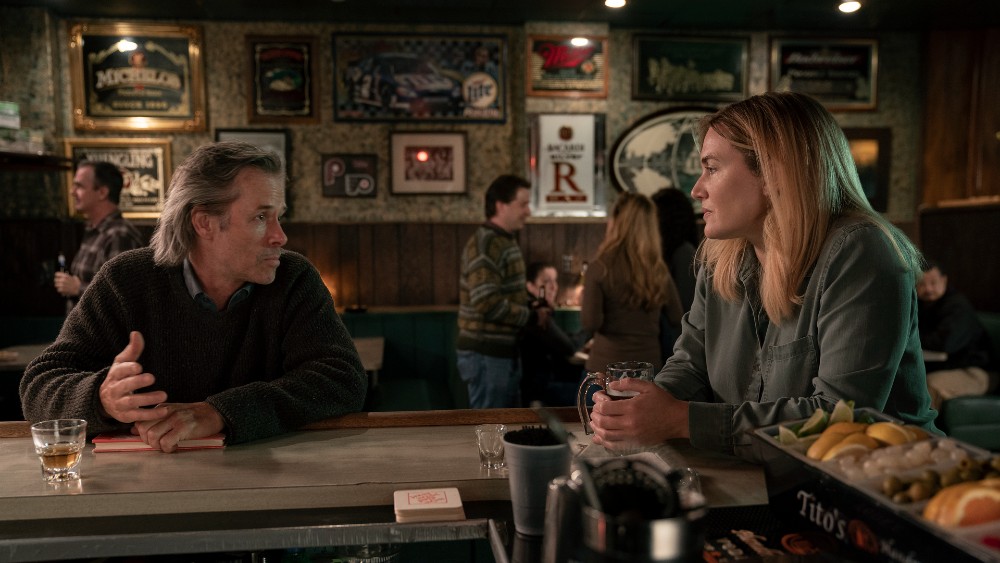
One of the year’s few bonafide hits, Mare of Easttown gathered momentum over its seven-episode season until viewership tripled from its debut in April on the HBO Max streaming service. Written by Brad Ingelsby and directed by Craig Zobel, the story takes place in a blue-collar suburb of Northeast Philadelphia.
When a young girl is murdered, it’s up to police officer Mare (played by Kate Winslet) to solve the case. In the process, she uncovers secrets about her family and friends, some of which cause painful rifts. Capturing the lives of the show’s many characters became one of the jobs for Production Designer Keith Cunningham.
The limited series’ distinctive look is due in part to Cunningham’s preproduction collaboration with Cinematographer Ben Richardson and Costume Designer Meghan Kasperlik. Cunningham also had the benefit of working in a similar milieu on his previous project, the Ben Affleck vehicle, The Way Back.
Cunningham has been production designer on a variety of projects, from crime to sci-fi and comedy. He worked on the Brian Wilson biopic Love & Mercy; James Gandolfini‘s final film, Enough Said; and director Rupert Wyatt‘s Captive State. As art director, Cunningham worked with directors like Paul Feig, David Fincher, and Steven Soderbergh. He studied at the American Film Institute under the legendary Robert Boyle.
Cunningham spoke with Below the Line by telephone.
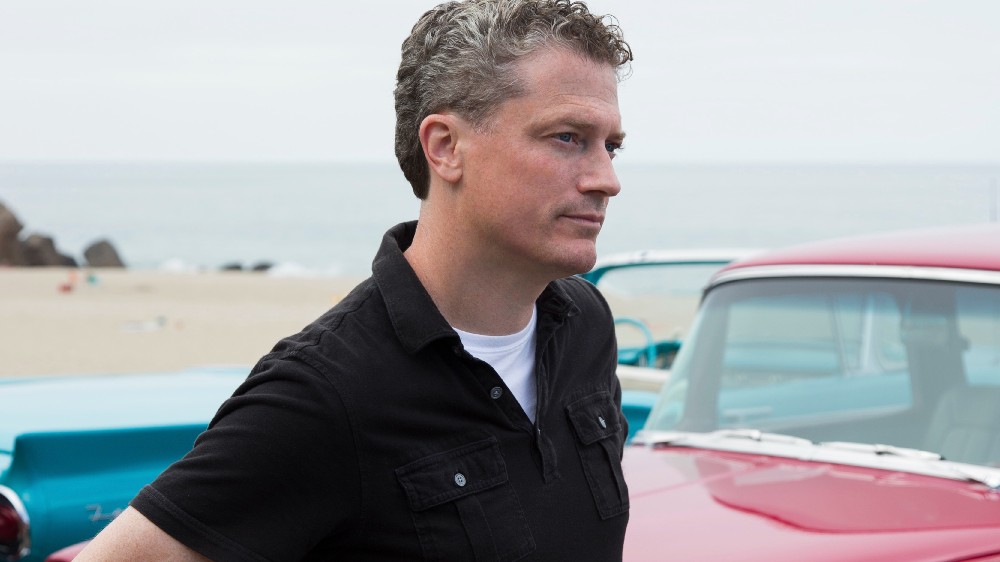
Below the Line: When did you join Mare of Easttown?
Keith Cunningham: I worked with Brad Ingelsby on The Way Back in late 2018, and I remember seeing his pilot script for Mare. Once HBO okayed the project, the team asked me to join. I knew a bit about the area because, I worked as an art director on M. Night Shyamalan‘s Signs almost twenty years ago.
Philadelphia has a small, diverse, wonderful filmmaking community, so when I got the call for Mare I knew the prop makers, painters, and craftspeople to contact. We shot outside the city in places like Coatesville, Drexel Hill, Chester, and in little townships where Brad grew up.
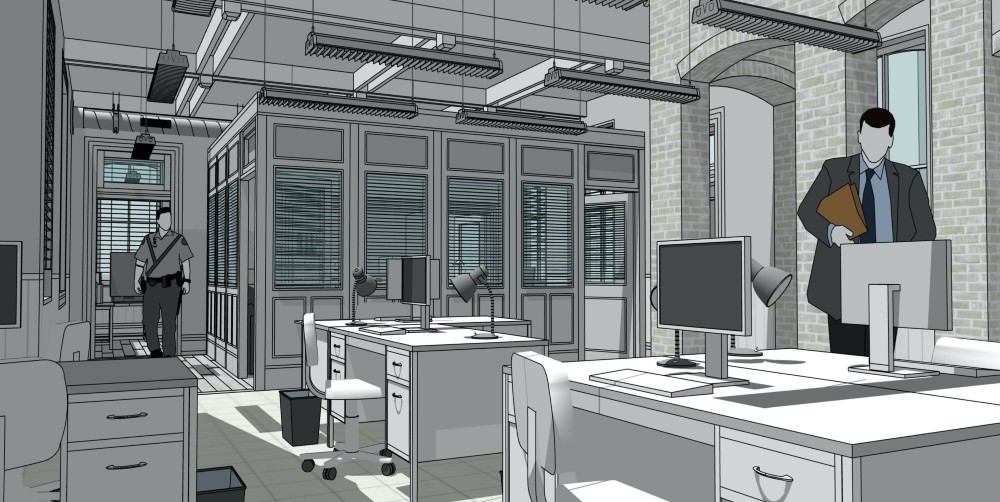
Below the Line: How would you describe the look you were trying to achieve?
Cunningham: It’s working class. We were trying to find a kind of blue-collar poetry in real people, real towns.
At the same time, the story’s pretty dark. There’s heavy drama and trauma in the plot and the characters’ back-stories, and we didn’t want the design to be bleak-on-bleak-on-bleak. Because there are so many characters, the design had to be eclectic but cohesive at the same time. It was a challenge, quite a puzzle.
My first meeting with Brad, he shared a bunch of family photos. That gave us so much information as a jumping off point for characters, architecture, the landscape. A lot of the crew lived there, and they gave us guidance.
After they shared stories about their lives, one of our guiding principles as we were scouting was that people quite often inherit their parents’ furniture, whether they moved out or unfortunately passed away. You know, “This is the sofa that I grew up with,” or this chest of drawers, this breakfront cabinet in the kitchen. Making a generational connection, that was wonderful. Maybe it’s a little dated, you know, that felt truer to what we were looking for.
We talked with Kate early on — she’s a producer as well as actor, getting her feedback. Among her notes, she said she would love to see boxes behind doors, how things gather. It might be that random roll of wrapping paper, the shoebox that gets kicked underneath the bed. Maybe the doors don’t open all the way. The stuff that happens in real life, and you maybe don’t notice. The challenge was trying to make that diverse. Because we had so many characters, you didn’t want to constantly repeat the same sort of trick.

Below the Line: How much were you able to prep with other departments?
Cunningham: We met with Ben and Meghan, obviously with the director and Brad, to figure out our visual parameters, design guide rails for ourselves, so we all knew what we each needed and could expect from the other departments.
For Ben, we knew all seven scripts were full of very, um, let’s say unremarkable locations, right? A lot of houses, a lot of bars, hospital rooms, police stations that aren’t exactly up to standard. Small spaces, a lot of small spaces. We definitely talked about how to bring light in. We’d want the window treatments to be translucent, or materials, so Ben could shoot both day and nights scenes. Pretty much everything is in each of the seven episodes. Sometimes we had to make windows a little bigger. We would put glass in doors just to give some help, knowing Ben wouldn’t have as much room to light scenes. We put lights in the ceiling, or gave Ben’s crew places to mimic natural light with outside equipment.
We talked a lot about colors, Ben and obviously Meghan. We wanted everything to feel structural, whether it’s wall surfaces or clothing fabrics or patterns in the furniture. It sounds simple, but it was really a challenge. We joked that we were always trying to find the right kind of wrong. We didn’t want to make sets ugly, but we don’t want them too precious either. It’s more than just throwing a pile of laundry on the couch. We really tried to find the awkwardness of life, how stuff kind of takes over.
Below the Line: What was your ratio of sets to locations?
Cunningham: I think we had around 125, 150 sets, and maybe 30 builds. We needed some cover sets we could control. A few sets that repeated, like Mare’s interior and the police station, we were better to be on stage in a controlled environment.
Then early on during COVID, before the vaccines, we knew we didn’t want to be out in public. So we ended up building a little more than maybe we planned originally. HBO was amazing, putting together the protocols to keep us all safe. It was extraordinary that we could get this complicated show done. They were right there for us.
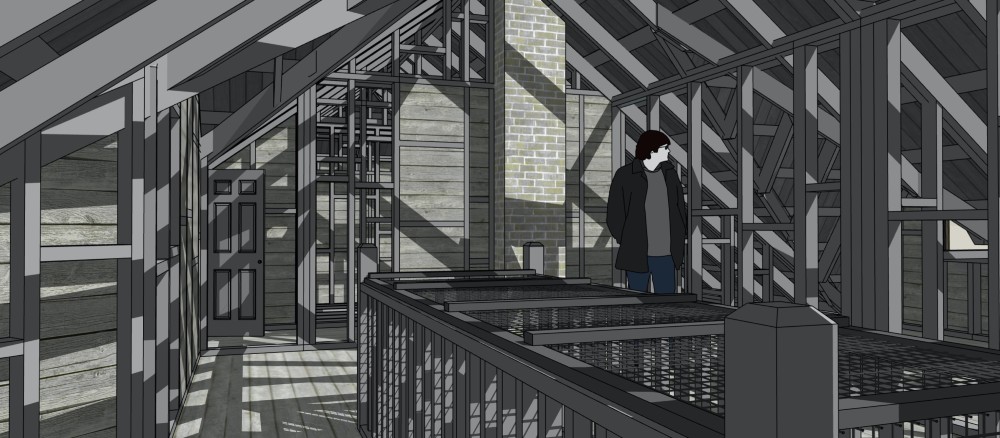
Below the Line: Did the COVID protocols affect your creativity?
Cunningham: I think, in some ways, it helped crystallize the decision-making process for a lot of us. Directors, producers, designers, location teams, crew members, we just had to be really decisive. We had to come up with plans about approaching locations and shooting in very limited spaces. In a way, it really helped us all be more aggressive in terms of our decision-making.
We would have to add extra time to get these things done. I would say our set dressing went up maybe three times compared to pre-COVID. If we had a day to dress a location before, now it would take at least three, partly because fewer people could work in the physical space. The linear timelines for each department stretched out. It’s a long answer to get to: I was inspired. It was a little nerve-wracking, nobody was sure how it was going to work, no one wanted to take any chances. We’re all proud to say we succeeded.
Below the Line: Let’s take a specific location, like the therapist’s office Mare visits. Can you talk about designing that?
Cunningham: Often we try to reuse scenery or redesign it, so it can play maybe two or three times. Then we’ve got less of a build and save some money. That therapist’s office had three lives. It was a residence, the therapist’s office, then it also played the college radio station.
Below the Line: It helped mirror Mare’s emotional state. How do you design mood and emotion into a set?
Cunningham: That’s what I love about my job, trying to add that emotional layer to physical scenery. It definitely had to feel foreign to Mare. It’s a place that she’s not comfortable in. She scoffed at the whole therapy thing.
The office was more orderly in terms of the dressing, more coordinated. It was probably our most coordinated and decorated set in the whole show. It’s missing all those layers we talked about earlier, layers of clutter and life. This was more of a “safe space” for the therapist’s clients. Everything’s squared off in terms of the furniture placement. The knickknacks are just so.
Part of the concept was a lot of light, so it can feel redemptive at the point when Kate has a breakthrough. Ben lit it for sunlight as a layer of resolve for her. The therapist was in a more interior part of the office. We designed a solid wall behind her, and in front of that we wanted some decor that had a density to it, texture and color.
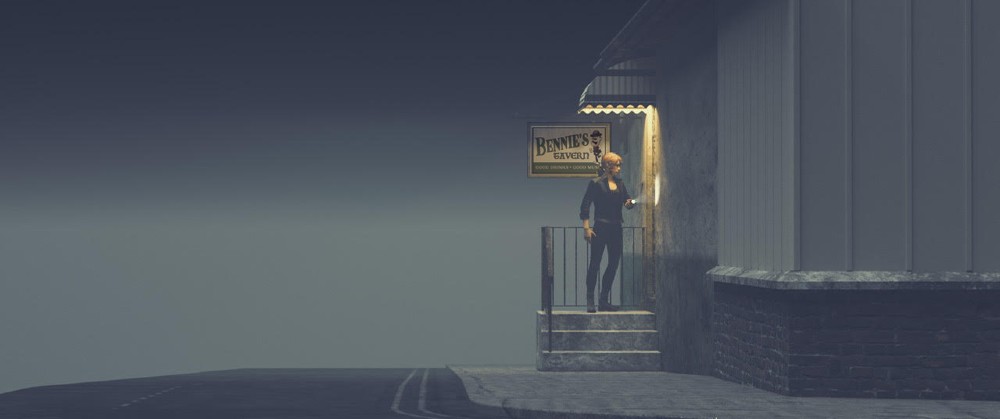
Below the Line: The characters in Mare of Easttown refer to Wawa, but you never actually show one. Was that a branding issue?
Cunningham: Brad’s scripts were filled with these wonderful details, but there’s often a branding issue. Wawa is pretty much everywhere down there, but they’re more updated, new-fangled, with coffee bars and food service. We were thinking of something a little more dated. We could reference it, like Detective Zabel [Colin Peters] was always going to Wawa to get coffee for Mare.
We had to create our own pseudo-Wawa for the convenience store where Dawn Bailey [Enid Graham] works. It was a closed-down gas station that we found in an amazing location. It looked like the prow of a ship, the road splits into a Y right in front of it. Which was perfect for the scene where Dylan [Jack Mulhern] pulls out with Kenny [Patrick Murney] just as Mare pulls in.
We stocked the whole interior, painted, resurfaced all the walls and floors and brought in all the dressing. There’s a scene inside, a confrontation with three characters, so the triangular dynamic worked on both the inside and the outside. That location was a real coup.
Below the Line: Did you like the Saturday Night Live skit?
Cunningham: “Murder Durder?” They did an amazing job, hilarious and dead-on. It was a little bit of a dig, obviously, but also sort of a compliment. To hit SNL‘s radar meant our show was drawing a lot of attention.
The full Mare of Easttown series is available to stream on HBO Max. You can read our previous interviews with Director Craig Zobel and Cinematographer Ben Richardson.
All photos and sketches courtesy HBO and Keith Cunningham. (Click on images for larger versions.)





